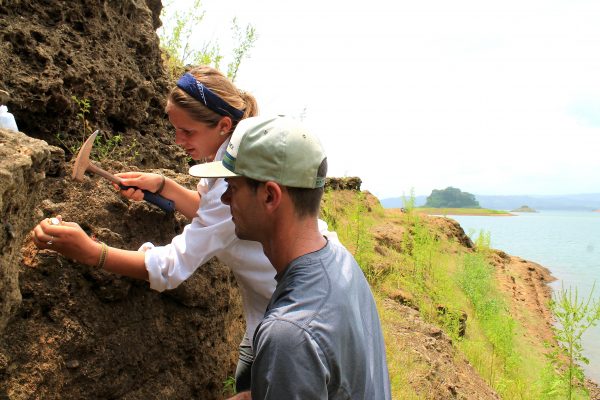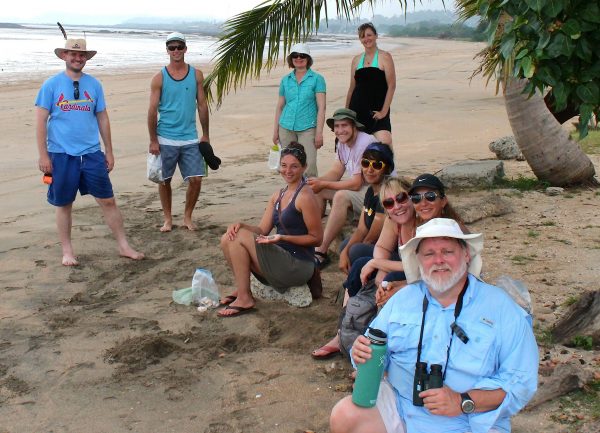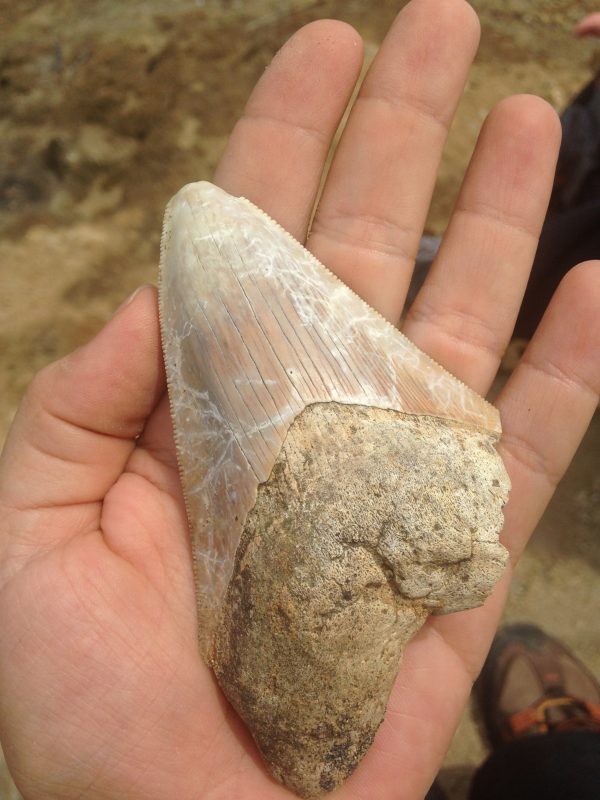Over the past 4 million years, North American fauna migrated to South America via the Isthmus of Panama. Florida Museum scientists and K-12 educators recently made the same trek to dig up the past.

Photo courtesy of Megan Higbee Hendrickson
A new $350,000 National Science Foundation grant is engaging Florida Museum of Natural History researchers with K-12 science educators in the real world of science through fieldwork and collaboration, including a two-week trip to Panama last month.
Florida teachers, including three from Gainesville area schools and one from Tampa, joined educators from California and New Mexico in Panama to work with scientists discovering fossils that tell the story of the Great American Interchange—the dispersal of plants and animals from North America to South America and vice versa, said project leader Bruce MacFadden, Florida Museum vertebrate paleontology curator and UF distinguished professor.
“Because they view science through the lens of education, the teachers are helping us advance knowledge of the migration by offering their unique perspective,” MacFadden said. “Likewise, scientists are working with educators to collect fossils and provide understanding of the paleontological context of findings in the field.”

Photo courtesy of Megan Higbee Hendrickson
The three-year Great American Biotic Interchange – Research Experience for Teachers project involves 30 teachers, plus paleontologists and graduate students. It is separate from the Florida Museum’s Panama Canal Project Partnership for International Research and Education, which MacFadden also leads. The new project offers science teachers the opportunity to work with scientists in international fieldwork to better understand extinct animals that once crossed Panama. Prior to the trip, educators participated in a three-day orientation in Santa Cruz, California, where they heard the experiences of teachers who traveled to Panama with the program last year.
“Sometimes it is hard to get students really excited about science because they think they will never be an Albert Einstein,” said Megan Higbee Hendrickson, a science teacher with the Academy of Holy Names in Tampa. “My goal for this trip was to bring back information that I can share with the students that enables them to question and also apply the content that we are learning to the outside world.”
As many states are changing their science curriculum to the Next Generation Science Standards, which emphasize the science process rather than memorization of facts, MacFadden said this is a good time for teachers to gain first-hand paleontology experience. The project’s field trips and workshops, for example, provide insight into evolution and climate change over millions of years.

Florida Museum photo by Claudia Grant
“By participating with myself and my colleagues in the field, teachers will be immersed in the process of paleontology from the collection of fossils to the analysis of findings in the laboratory,” MacFadden said.
MacFadden is hopeful the teachers’ experiences will affect the learning of thousands of students each year.
Follow-up to the Panama trip includes collaborative lesson plan design, Skype sessions between educators and scientists and a final December fieldwork session in New Mexico. The session at the New Mexico Museum of Natural History and Science and fieldwork in the area will involve recovering fossils the same age as those found in Panama.
Clay Reddick, a science teacher at Kanapaha Middle School in Gainesville, said the ultimate goal of the project is for scientists and teachers to collaborate and build a community for educators who wish to take science education to new levels.
“By understanding the entire process of scientific work, I can communicate science more efficiently to 6th graders and prepare them for the advanced sciences that they will encounter as their education progresses,” Reddick said.
Learn more about the Panama Canal Project Partnership for International Research and Education (PCP PIRE) at the Florida Museum.
Learn more about the Vertebrate Paleontology at the Florida Museum.